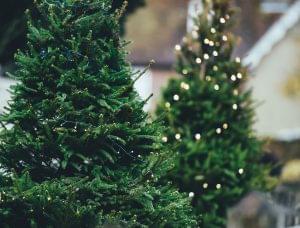There will be enough Christmas trees this year too – it is worth choosing domestic pine
The harvesting of “Christmas trees” has begun in the domestic pine plantations, the National Chamber of Agriculture (NAK) and the Interprofessional Organization of Hungarian Ornamental Gardeners informed. Contrary to misconceptions, the goods on the market do not originate from the “extermination” of forests, but the pines grown as Christmas trees come from nurseries. In Hungary, 3,000-3,500 hectares of pine are grown specifically for Christmas tree sales, which – including distribution – provides work for 600-700 family farms. We can also help them by choosing domestic pine.

(Photo: Pixabay)
In our country, 1.8-2 million Christmas trees are found every year, and there will be no shortage this season either. Spruce, silver and Nordmann pines are still dominant in the selection. Pine trees are grown on about three thousand hectares, mainly in the counties of Vas, Zala, Somogy, but many people are also engaged in this activity in the Northern Central Mountains – around Mátra and Bükk – and in Nógrád county. The harvesting of trees typically begins in the second half of November, and it has already started this year, first with ball pine trees, followed by export.
The varieties are sold mixed to the neighboring countries, the Romanian and Slovak markets. Nordmann fir is mainly imported, mostly from Denmark, the import volume is typically 500,000 pieces, but domestic Nordmann production is also significant.
Because of its characteristic smell, we consider the spruce to be the Christmas tree in the classic sense
It is popular, but it is well known that its needles fall off quickly in warm apartments. Another popular Christmas tree is the silver fir, which is a member of the spruce genus. The tree with a dense branch system is made decorative by needles covered with a bluish-green layer of wax, which are, however, very prickly. Therefore, their demand among families with children has decreased somewhat. The most popular type of Christmas tree is Nordmann, native to the Caucasus. It has a regular, attractive shape, its foliage is dark green, its glossy needles are soft, 3-4 cm long, and hardly ever fall. It stays for months even in warm apartments.
In addition to live pines, you can also find an ever-expanding range of artificial pines
Those who decide to buy artificial pine are mostly guided by the fear of nature or the love of comfort. Although the artificial pine also has its own market, it does not hurt to know that the goods on the market do not originate from the “extermination” of forests, but that the pines grown as Christmas trees come from nurseries. Contrary to popular belief, the plastic pine tree is more environmentally friendly than the traditional one only after a long, twenty-year use. Most of the artificial pines come from China, so their ecological footprint is extremely large. In addition, according to experience, customers usually discard these after 5-6 years, while an artificial pine should be used for at least 20 years year after year in order to be a truly more environmentally friendly alternative.
Related news
More than 100 Hungarian farmers also demonstrated in Brussels
🎧 Hallgasd a cikket: Lejátszás Szünet Folytatás Leállítás Nyelv: Auto…
Read more >Hungarian champagne crowns the end-of-year holidays!
🎧 Hallgasd a cikket: Lejátszás Szünet Folytatás Leállítás Nyelv: Auto…
Read more >NAK: Domestic producers await customers with an ample supply of all pine species
🎧 Hallgasd a cikket: Lejátszás Szünet Folytatás Leállítás Nyelv: Auto…
Read more >Related news
Christmas shock in commerce: for the first time, we can pay with bank cards in fewer places
🎧 Hallgasd a cikket: Lejátszás Szünet Folytatás Leállítás Nyelv: Auto…
Read more >Hungarian Confectionery Manufacturers Association: trends in 2025 and prospects for 2026
🎧 Hallgasd a cikket: Lejátszás Szünet Folytatás Leállítás Nyelv: Auto…
Read more >Most grocery chains will be open until noon on December 24th
🎧 Hallgasd a cikket: Lejátszás Szünet Folytatás Leállítás Nyelv: Auto…
Read more >






